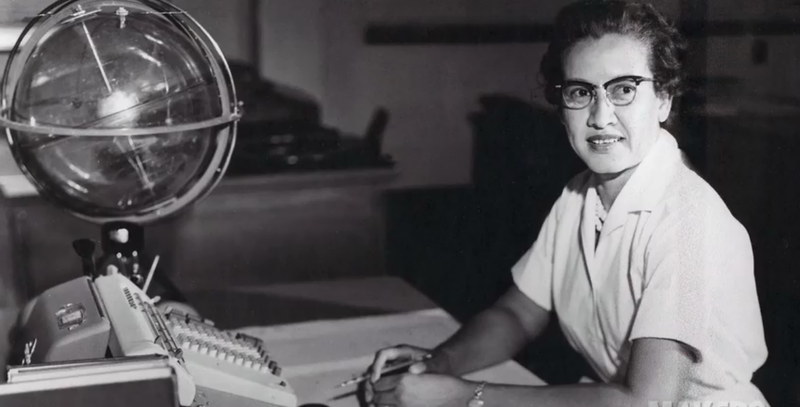Brilliant NASA mathematician Katherine Johnson dies at 101
March 9, 2020
Katherine Johnson, the ground-breaking and pioneering mathematician who helped to send a man to space as a part of the National Aeronautics and Space Administration, died on Feb. 24 in her retirement home in Newport News, Virginia at the age of 101.
She is credited with paving the way for both African Americans and women in the area of S.T.E.M., being that she was one of the first black women to be able to work for NASA in the capacity that she did and actually be accredited for her work.
“NASA is deeply saddened by the loss of a leader from our pioneering days and we send our deepest condolences to the family of Katherine Johnson,” a statement written by NASA administrator Jim Bridenstine said.
“Ms. Johnson helped our nation enlarge the frontiers of space even as she made huge strides that also opened doors for women and people of color in the universal human quest to explore space.”
In 2015, under former President Barack Obama, she was awarded the Presidential Medal of Freedom. He called her a “pioneer in American space history,” according to an article from Huff Post.
Johnson’s mathematic calculations helped put a man in orbit for the first time. Her calculations were more trusted and accurate than those of computers, which were susceptible to glitches and malfunctions.
“Get the girl,” astronaut John Glenn, the pilot of the first American orbital space flight in 1962, had said of Johnson, according to an article from NBC News. “If she says they’re good, then I’m ready to go.”
It is for this work that she became the most well-known. Her work on Glenn’s flight, along with the work of several other black women at NASA, was the inspiration for the 2016 Academy Award nominated movie, “Hidden Figures.”
She was portrayed by actress Taraji P. Henson; Octavia Spencer played mathematician Dorothy Vaughan and Janelle Monáe played engineer Mary Jackson, both of whom worked at the space administration at the same time as Johnson.
After helping with this mission, Johnson also “calculated the precise trajectories that would let Apollo 11 land on the moon in 1969 and, after Neil Armstrong’s history-making moonwalk, let it return to Earth,” according to an article from The New York Times.
“Her dedication and skill as a mathematician helped put humans on the Moon and before that made it possible for our astronauts to take the first steps in space that we now follow on a journey to Mars,” Bridenstine’s statement continued. “Her Presidential Medal of Freedom was a well-deserved recognition.”
In 1961, Johnson also did trajectory calculations for America’s first human space flight Freedom 7 with astronaut Alan Shepard.
Johnson started at the National Advisory Committee for Aeronautics — NASA’s predecessor — in 1953 at the Langley Memorial Aeronautical Laboratory in its all-black computing group.
She also became the first woman of the Flight Research Division to be credited with authoring or co-authoring a research paper for her report with Ted Skopinski about orbital space flight equations.
It was the first of a total 26 research reports she wrote or helped write, all of which she got credit as an author on. She worked at NASA for 33 years.
Last year, when Johnson was 100, NASA celebrated the renaming of one of its facilities as the Katherine Johnson Independent Verification and Validation Facility.
In addition to working for NACA and NASA, Johnson also was a teacher. In 1937, before working for NASA, she was a public-school teacher at a black school in Virginia. She went back to teaching after retiring from the space administration.
Johnson was born as Creola Katherine Coleman on Aug. 26, 1918 in White Sulphur Springs, West Virginia to a farmer and a school teacher. She was the youngest of four children.
Johnson was gifted at math and science from a young age. Different publications have different numbers, but she became a high school freshman at either age 10 or 13 and began college at either 15 or 18.
She attended what was then called the West Virginia State College — now the West Virginia State University — which is a historically black college. She graduated there with high honors.
To commemorate her achievements, the college made a bronze statue of her on their campus, as well as creating a scholarship in her name.
Later, West Virginia University offered her a seat in their graduate school in 1939, as a part of their integration and desegregation efforts. Johnson was one of the first three and the only woman of the first three students offered this opportunity.
“At NASA we will never forget her courage and leadership and the milestones we could not have reached without her,” Bridenstine’s statement, which was released on Twitter, read. “We will continue building on her legacy and work tirelessly to increase opportunities for everyone who has something to contribute toward the ongoing work of raising the bar of human potential.”








